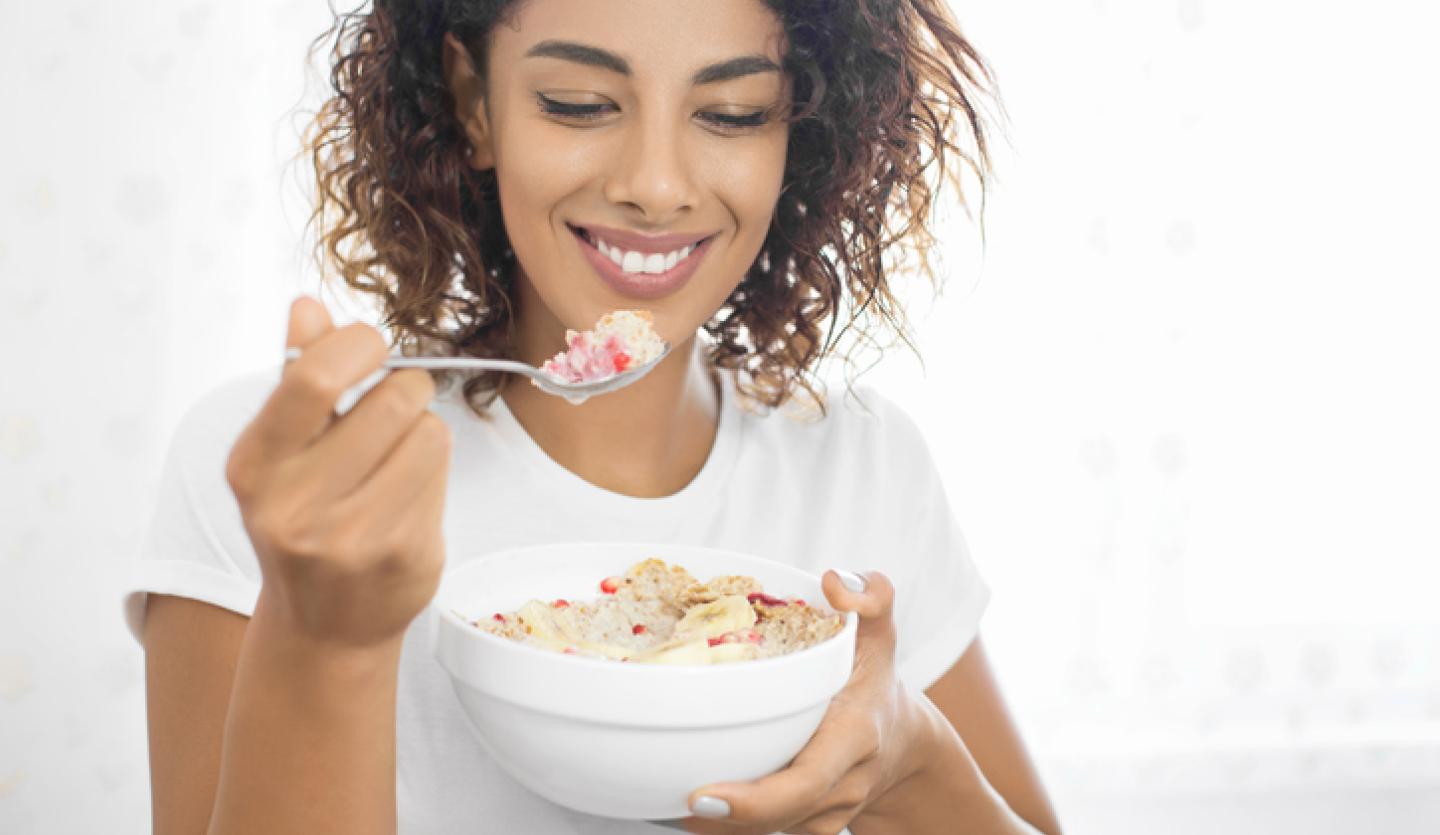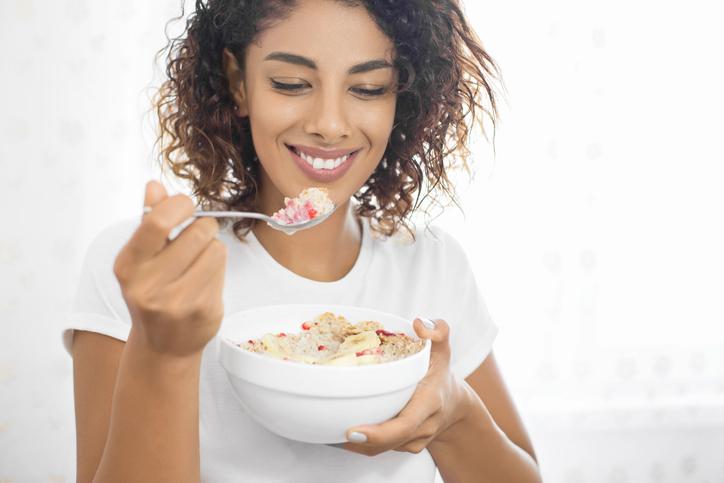Why should I eat high-fiber foods?
“Fiber is an essential part of our diets, but most Americans are not getting the daily recommended amount,” said Kerri Patti-Trepiccione, Catholic Health Clinical Dietitian. “Fiber has numerous health benefits and can decrease your risk for certain health conditions. Once you know more about fiber, you will learn how easy it is to make it a part of your diet.”
According to the American Society for Nutrition, less than 10% of American adults get the recommended daily amount of fiber. The benefits of fiber are numerous, including:
- Regulating bowel movements
- Lowering cholesterol
- Controlling blood sugar levels
- Maintaining a healthy weight
“High-fiber foods are more filling than low-fiber foods, so you can eat less and not feel hungry as quickly,” said Patti-Trepiccione. “Feeling full longer can help you achieve and maintain a healthy weight. A lack of fiber can make it harder to manage your weight.”
Fiber may reduce your risk for heart disease and certain forms of cancer. High-fiber foods such as fruits and vegetables may reduce inflammation. Chronic inflammation is a risk factor for diseases such as cancer and type 2 diabetes.
What are the different types of fiber?
Dietary fiber, also called bulk or roughage, is the fiber you eat. You can find it in the stringy parts of foods, like vegetables, that the body cannot absorb or digest. The two types of dietary fiber are soluble and insoluble. You need both for good health.
Soluble fiber dissolves in water and turns into a gel during digestion. This gel helps lower blood sugar and cholesterol levels as it moves through your system. Foods like apples, beans, carrots and oats have soluble fiber.
Insoluble fiber does not dissolve in water. It adds bulk to the stool, which can be helpful for people who struggle with constipation. Vegetables, wheat bran and whole grains have insoluble fiber.
Some foods may have added soluble fiber, called chicory root or inulin, on nutrition labels. Other names for added fiber include guar gum, locust bean gum and pectin. If you cannot get enough fiber from food sources, talk to your primary care physician about a fiber supplement.
How much fiber do I need?
The American Dietary Guidelines 2020-2025 recommends 14 grams of fiber/1000 calories for males and females for an average of 25-35 grams of fiber per day.
What are the best high-fiber foods to eat?
You can get fiber from fruits, vegetables, grains, legumes, nuts and seeds.
High-fiber fruits include:
- Apples with skin: 4.5 grams (1 medium apple)
- Bananas: 3 grams (1 medium banana)
- Raspberries: 8 grams per cup
- Pears: 5.5 grams (1 medium pear)
High-fiber vegetables include:
- Artichokes: 7 grams (1 medium artichoke)
- Broccoli, boiled: 5 grams per cup
- Carrots, raw: 1.5 grams (1 medium carrot)
- Squash: 6.5 grams per cup
High-fiber grains include:
- Bran: 5.5 grams per ¾ cup
- Brown rice, cooked: 3.5 grams per cup
- Quinoa, cooked: 5 grams per cup
- Whole wheat spaghetti: 6 grams per cup
High-fiber legumes, nuts and seeds include:
- Almonds: 3.5 grams per ounce
- Beans, such as black beans and kidney beans: 15 grams per cup
- Chickpeas: 24.4 grams per cup
- Pistachios: 3 grams per ounce
“Moderation is key to adding fiber to your diet,” said Patti-Trepiccione. “Increase your fiber intake gradually to allow your body to adjust. You may feel bloated or gassy if you eat too much fiber quickly. Also, ensure you increase your water consumption as you increase your fiber intake.”
How can I meet my daily fiber recommendations?
Some ways to meet your fiber needs throughout the day include:
- A breakfast of oatmeal and raspberries: 12 grams
- A lunch of salad and a sandwich: 8.9 grams
- A dinner of brown rice, kidney beans and cooked broccoli: 12 grams
You can drink a smoothie with milk or non-dairy milk, a banana and a cup of strawberries for 6.4 grams of fiber as a snack.
What are the risks of too much fiber?
Although it is essential to get enough fiber, overeating can also have risks, especially if you are not drinking enough water. Some common symptoms associated with too much fiber intake are:
- Bloating/stomach cramps
- Constipation
- Diarrhea
- Gas
In rare cases, eating excessive amounts of fiber can cause an intestinal blockage. You can usually clear a partial blockage by staying hydrated and consuming smaller meals, but you should talk to your doctor if you have stomach pain or constipation.
You should also talk to your doctor if you have gastrointestinal issues like inflammatory bowel disease (IBD) and irritable bowel syndrome (IBD). Too much fiber can aggravate those conditions.
What else should I know about fiber?
“The goal is to find the right balance of foods high in fiber and filled with nutrients,” said Patti-Trepiccione. “Fiber is just one component of a balanced diet. Your diet should also include lean proteins, healthy fats and low-fat dairy.”
She noted that high-fiber foods such as beans, nuts and seeds will increase protein and healthy fat intake. Additionally, since high-fiber fruits and vegetables are low in calories, you can eat larger portions filled with vitamins, minerals and antioxidants.
“To ensure the benefits of fiber, drink the right amount of water to aid in digestion and movement of fiber through the digestive tract,” said Patti-Trepiccione.
Talk to your primary care physician about your nutritional needs. Your PCP can recommend you to a dietitian to help meet your healthy eating goals.







